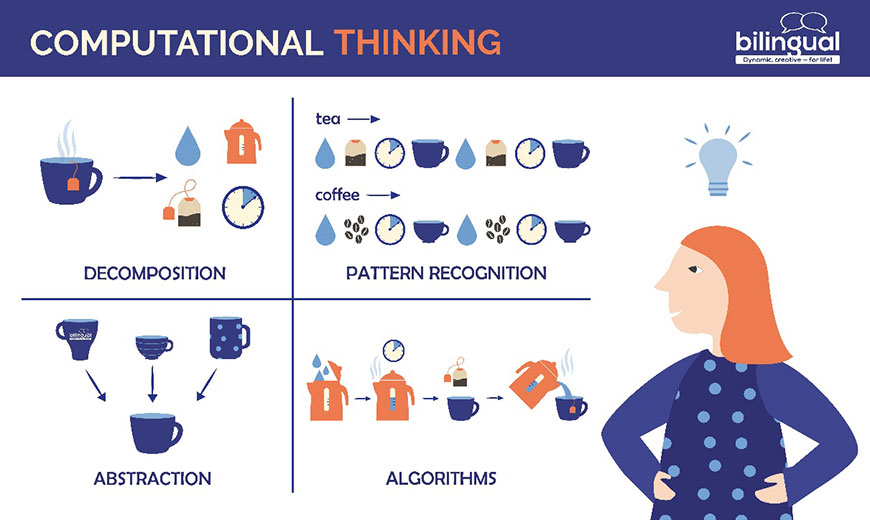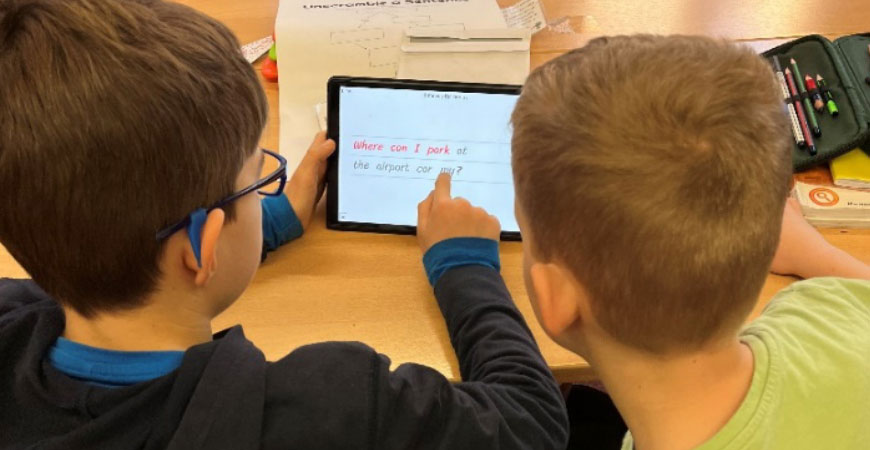Dear Parents and Teachers,
What is Computational Thinking in Education?
Think of Computational Thinking (CT) as a superpower for students. It's like teaching them how to tackle big problems by breaking them into smaller, solvable parts, unleashing their creativity, and boosting skills like self-confidence, creativity, and perseverance. And CT isn't just about programming. In fact, it needn’t have anything to do with computers at all. It’s simply a versatile mindset that fosters holistic growth.
Why should my child learn CT?
Here's why CT is a game-changer for your child's education:
- 21st-Century Skills: CT hones 21st-century skills like critical thinking, creativity, communication, and collaboration – vital for future success.
- Analytical Thinking: CT sharpens critical thinking and logical reasoning, essential for success in any field.
- Transversal Application: Your child can apply CT across various subjects and situations, making them adaptable and versatile learners and doers.
- Digital Skills & Ethics: In today's digital world, your child needs to be tech-savvy. CT equips them with digital prowess while emphasizing responsible tech use.
How can I see CT in action?
Let's dive into a practical example where CT comes to life – making a cup of tea:

Tea making:
Imagine making tea as an analytical, problem-solving journey. We can analyze the process using each of the four essential aspects of CT:
- Decomposition: Identify the components - kettle, water, mug, tea bag, and time.
- Abstraction: Focus on the essentials; the type of mug and water source don't matter..
- Pattern Recognition: Notice similar steps for making other drinks like hot cocoa or coffee.
- Algorithms: : Create a step-by-step process –
- Fill the kettle
- boil the water
- place the tea bag in the mug
- pour the hot water
- let it steep for 3-5 minutes
- remove the tea bag
- and enjoy!
This tea-making adventure covers the core CT concepts and could even dive deeper into other aspects of CT, including efficiency, debugging, and conditions.

Why is CT important for the future?
When your child experiences CT in the Bilingual Program, they're simultaneously learning language, developing soft skills, and sharpening their critical thinking. As we said, CT relates to computer programming, but it’s so much more: it elevates learning across various subjects, dovetails seamlessly with language learning, and preps students for a dynamic future where their power to analyze, learn and solve is… superpowered.


What comes next?
We believe students reach their full potential when teachers intentionally teach the use of computational thinking. At Óbudai Nagy László – Váradi school, Bilingual Program teachers were trained to integrate CT into their teaching last year. Starting in September 2023, this transformative project has expanded to all our partner schools.
In summary, Computational Thinking is an essential educational approach. It empowers students to become confident, adaptable, and innovative problem solvers. By integrating CT into education, we're equipping our children with the tools they need to thrive in a constantly evolving world. Let's embrace this transformative journey together and set our children on the path towards success!
Sincerely,
Ruth Senum
Senior Teacher for Computational Thinking

